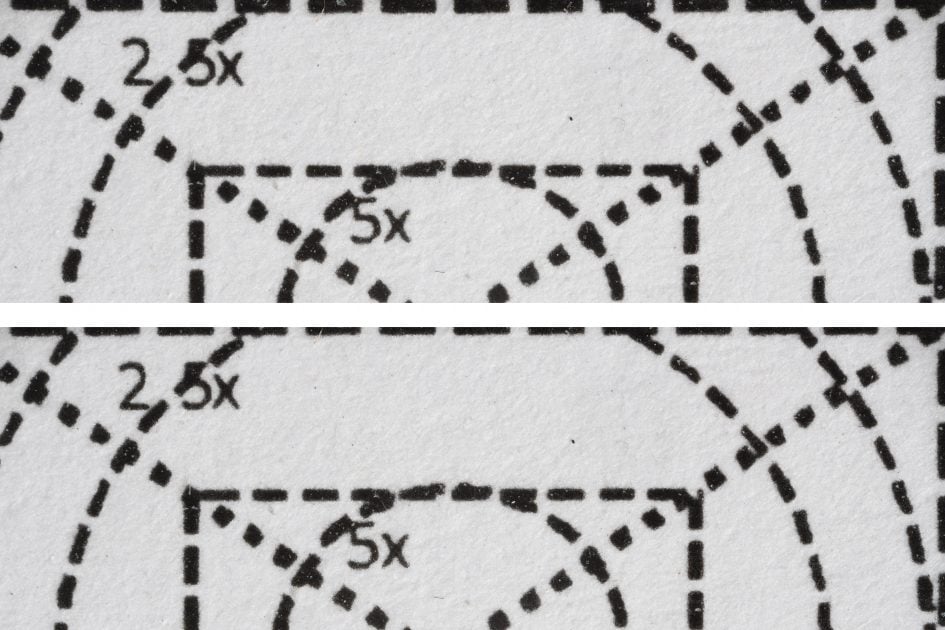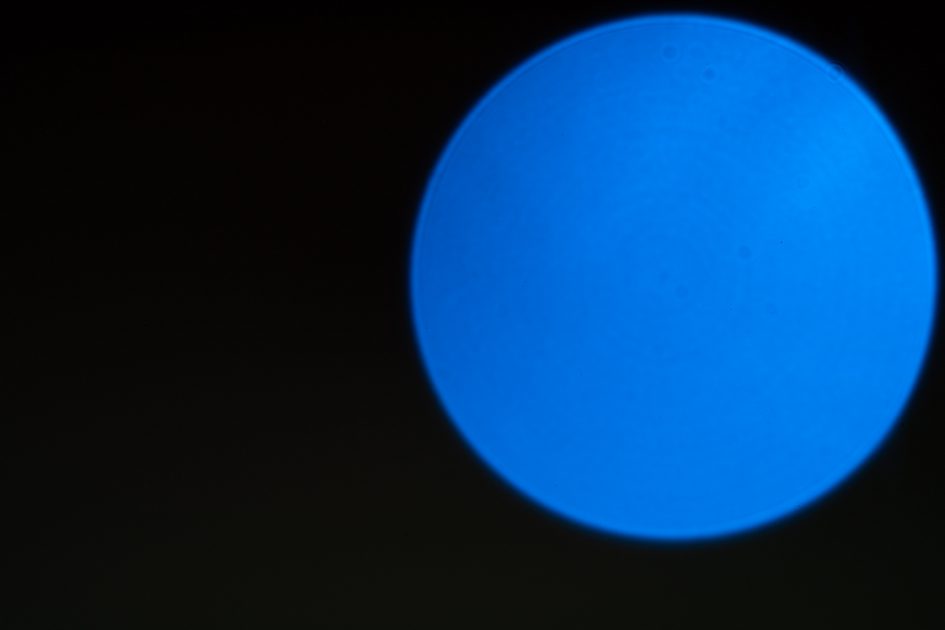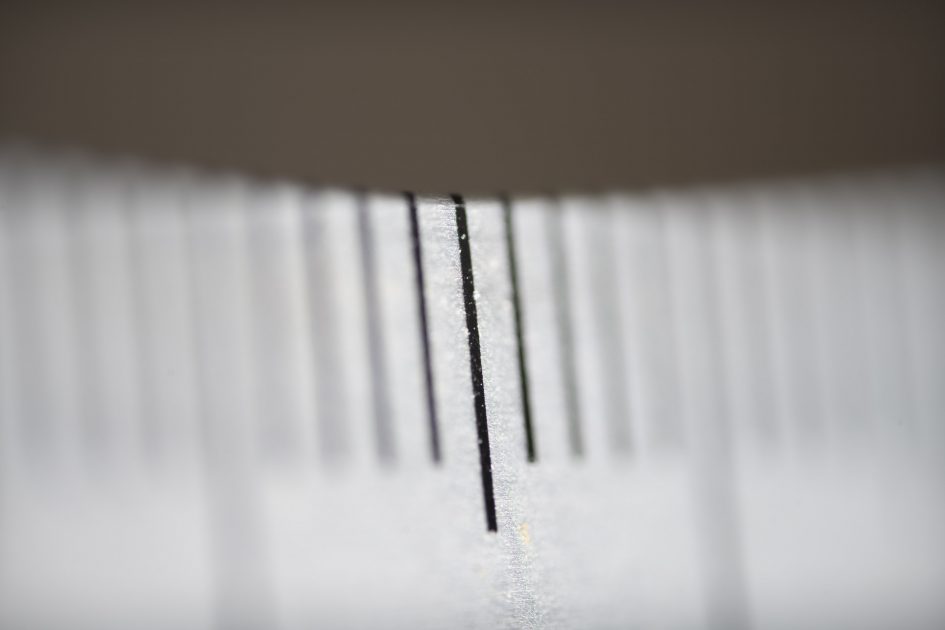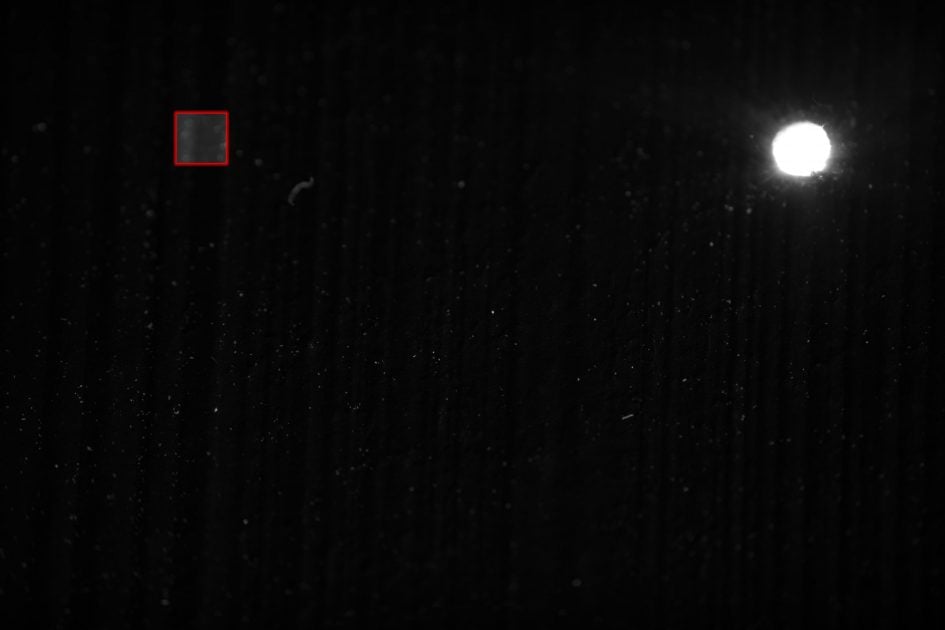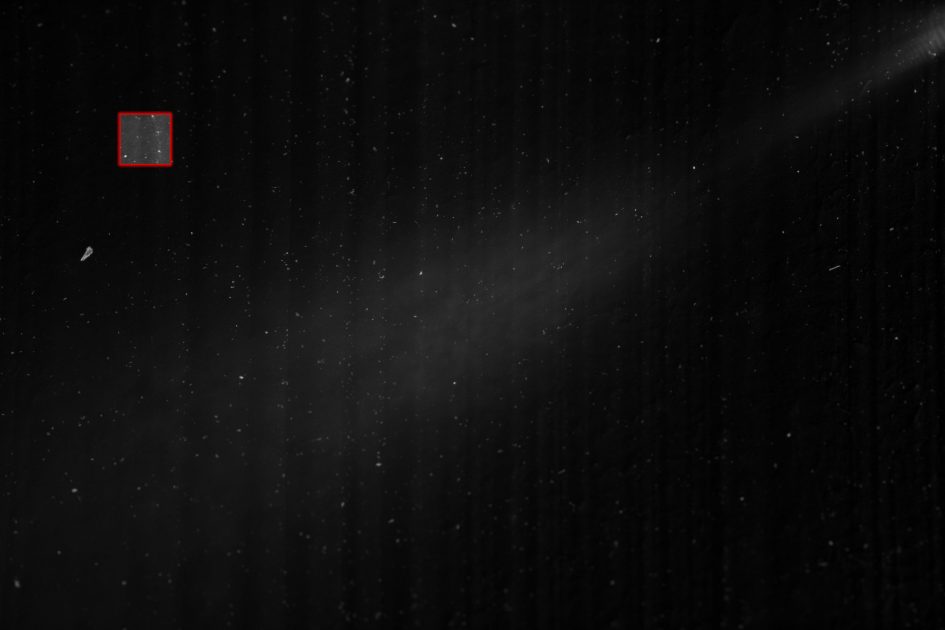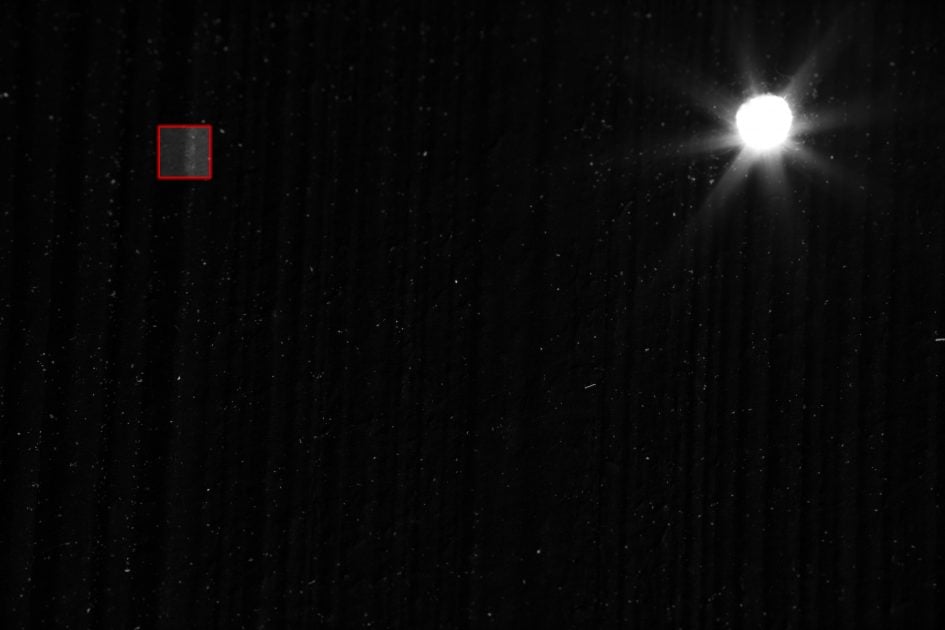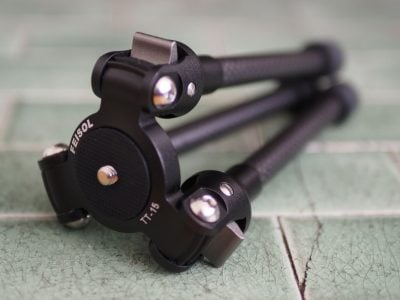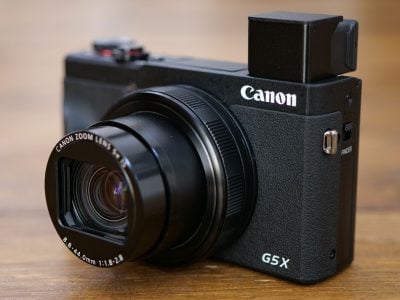Laowa 25mm f2.8 2.5-5x Ultra Macro review
-
-
Written by Thomas
Quality
Testing: Longitudinal Chromatic Aberration and focus shift
Lenses with focal ratios of f2.8 or larger are often prone to longitudinal color aberrations (loCA, a.k.a. “axial color” or “bokeh CA”). These show up as magenta coloration in the foreground and greenish hues in the background and are not easily corrected in post-processing. The test shots are from an aluminum ruler, so the marks are 1mm apart in the 100% crops below. The Laowa 5x Ultra Macro shows quite some loCA wide open but hardly any focus shift.
Laowa 5x Ultra Macro longitudinal Chromatic Aberration (loCA)
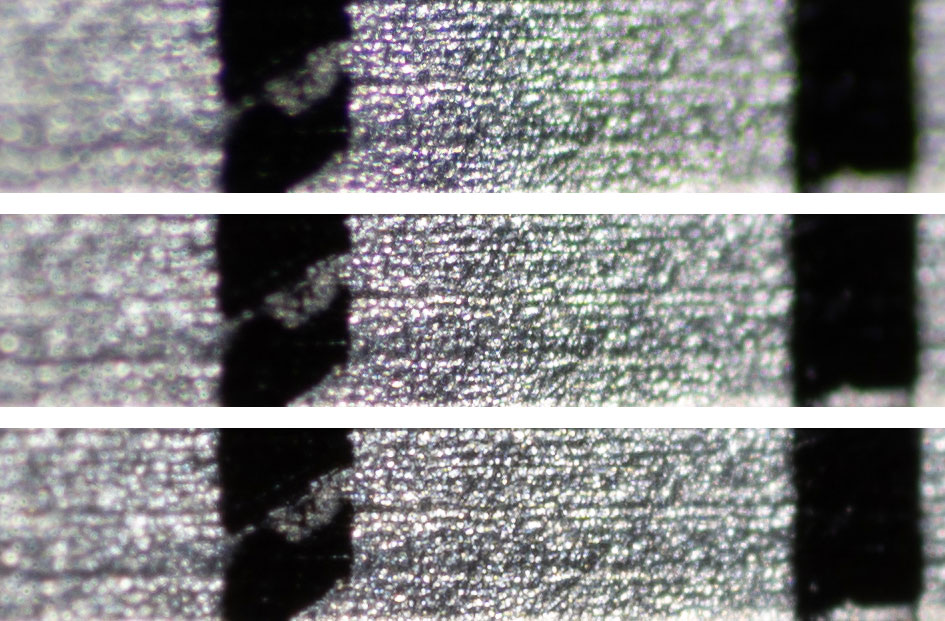
Above: Shot at 2.5x magnification, 100% crops from top to bottom: f2.8, f4.0, f5.6; left = foreground, right = background
The Laowa 100mm f2.8 2x Macro APO shows less coloration from loCA:
Laowa 100mm f2.8 2x Macro APO longitudinal Chromatic Aberration (loCA)
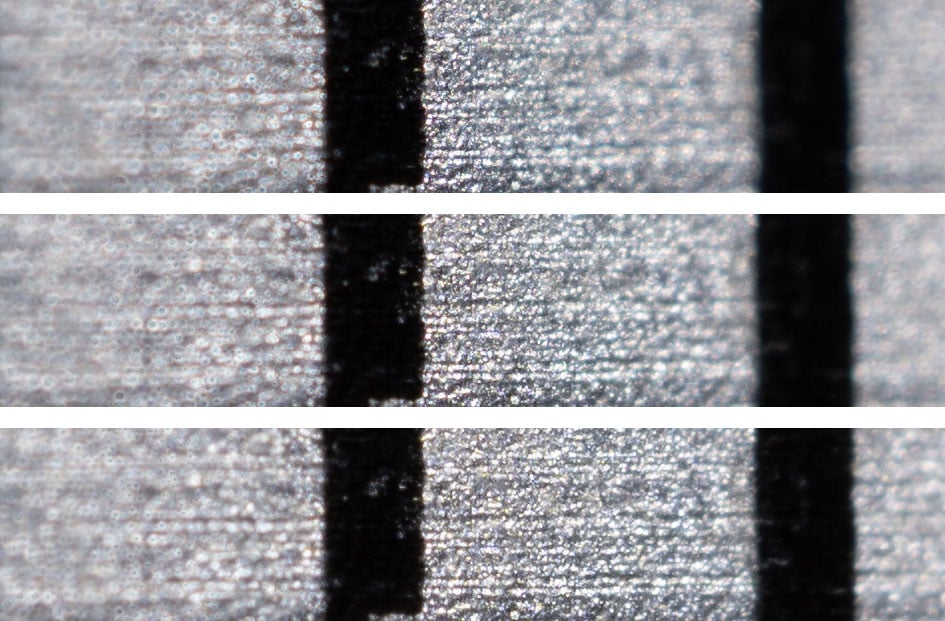
Above: Shot at 2x magnification, 100% crops from top to bottom: f2.8, f4.0, f5.6; left = foreground, right = background
Sharpness and contrast
Let’s have a look at the theoretical performance of the Laowa 5x Ultra Macro first and compare it to the Sigma 105mm f2.8 DG DN Macro Art:
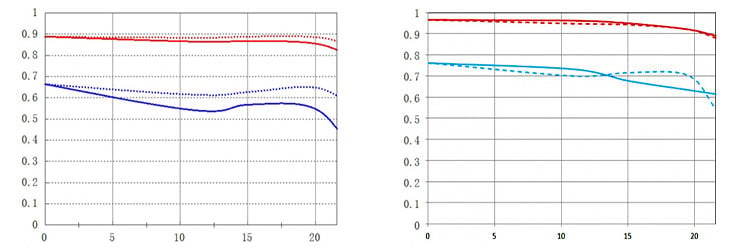
Above: Laowa 5x Ultra Macro at 2.5x (left), Laowa 100mm f2.8 2x Macro APO at 2x (right)
These MTF charts show the computed lens-performance of lenses wide open without influence of diffraction at 10 line-pairs/mm (red) and 30 lp/mm (blue). Other than with normal lenses the charts above show performance at 2.5x resp. 2x magnification. Higher values are better (more contrast) and the closer the line-pairs are together the less astigmatism (= resolution depends on the orientation of the test-pattern) the lens has. The x-axis displays the distance from the optical axis (=center of the sensor) in mm. I’ll show you the real-life performance at 0 mm (center), 14 mm (APS-C/DX-corner), and 21 mm (FF/FX-corner) on a on a 45MP Nikon Z7 camera.
From the charts contrast and resolution of the Laowa 5x Ultra Macro trails the Laowa 100mm f2.8 2x Macro APO by roughly 10% at any image height. Performance of both lenses is very even across the sensor and there is only little astigmatism.
Let’s see how this theoretical performance translates into real life results in the following sharpness test. Processing was done in Lightroom 10.2/CRAW 13.2 from RAW to Adobe Color profile with CA compensation applied. Noise-reduction is set to 0, sharpening to 50/0.5/36/10, with no extra tone, color, or saturation adjustment. White-balance was adjusted to a neutral white in some of the shots.
The following 100% crops show the Laowa 25mm f2.8 2.5-5x Ultra Macro at 2.5x magnification at nominal apertures of f2.8, f4.0, f5.6. Effective apertures are f9.6, f13, f19. The target was a test-pattern printed with a laser-printer and the crops in each row are from a single shot as the lens shows very little field curvature. You can clearly see the influence of diffraction softening the image at f5.6. I did some exposure compensation to make the brightness of different crops match. So you will not see light fall-off in the corners.
Laowa 5x Ultra Macro; 100% crop from center, APS-C/DX-corner, FF/FX-corner

Above: Laowa 5x Ultra Macro at f2.8, 2.5x

Above: Laowa 5x Ultra Macro at f4.0, 2.5x

Above: Laowa 5x Ultra Macro at f5.6, 2.5x
The next set of images was shot wide open from low ISO b&w film negativ at 2.5x and 5x magnification. So the “noise” that you see in the crops is actually the film grain. Each crop was specifically focused for optimal sharpness. The lens does get a bit softer towards the FF/FX-corner but not by much.
Laowa 5x Ultra Macro; 100% crop from center, APS-C/DX-corner, FF/FX-corner
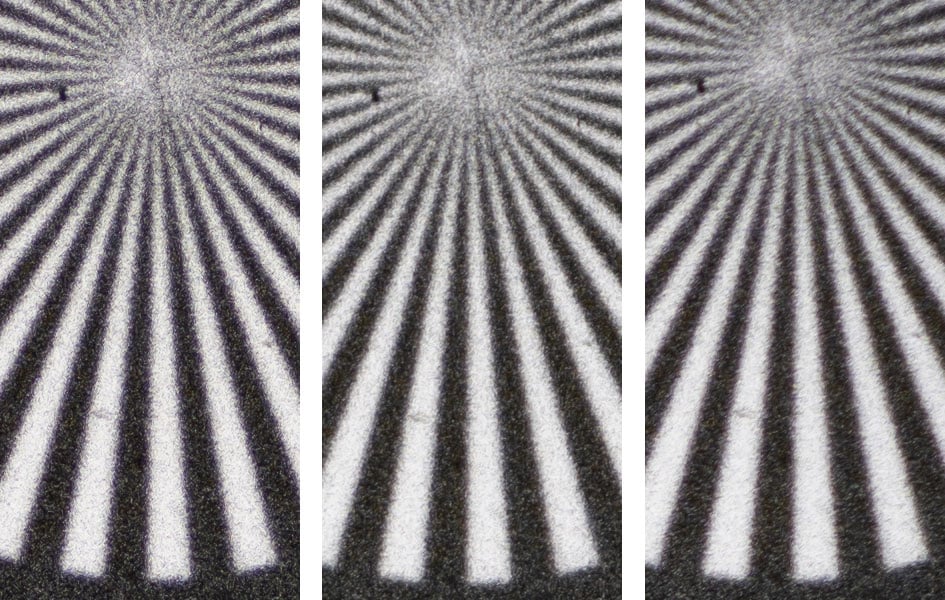
Above: Laowa 5x Ultra Macro at f2.8, 2.5x
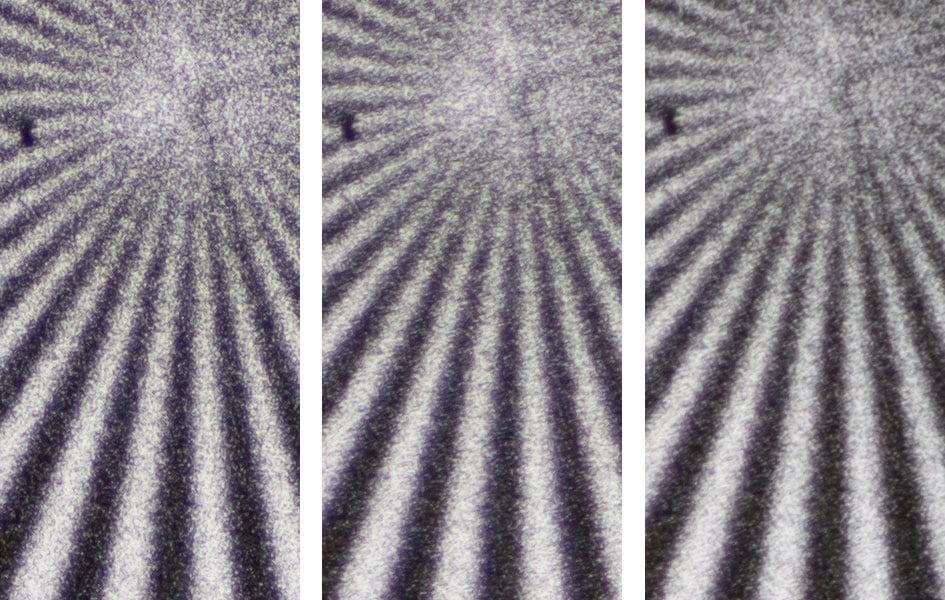
Above: Laowa 5x Ultra Macro at f2.8, 5x
The following crops are from multiple shots on a motorized MJKZZ Ultra rail and focus stacked from RAW files with Helicon Focus 7.6.6 Pro. This eliminates any effects from misalignment or less than totally flat subjects.
The first two rows of 100% crops are from a bank note shot at 2.5x and 5x magnification, the next four rows are from an LCD monitor with a pixel pitch of 101ppi.
Laowa 5x Ultra Macro; 100% crop from center, APS-C/DX-corner, FF/FX-corner
Above: Laowa 5x Ultra Macro at f2.8, 2.5x, focus-stacked; click image for 4k version, here for large original
Above: Laowa 5x Ultra Macro at f2.8, 5x, focus-stacked; click image for 4k version, here for large original
Above: Laowa 5x Ultra Macro at f2.8, 2.5x, focus-stacked; click image for 4k version, here for large original
Above: Laowa 5x Ultra Macro at f4.0, 2.5x, focus-stacked; click image for 4k version, here for large original
Above: Laowa 5x Ultra Macro at f2.8, 5x, focus-stacked; click image for 4k version, here for large original
Above: Laowa 5x Ultra Macro at f4.0, 5x, focus-stacked; click image for 4k version, here for large original
Performance of Laowa’s 5x Ultra Macro is pretty good wide open and very even across the full frame with little field curvature. Stopping down to nominal f4.0 (effective f13 at 2.5x magnification resp. f24 at 5x magnification) increases acuity a bit for the extreme corners. But for optimal sharpness I wouldn’t stop down beyond that if you can cope with the razor thin depth of field.
Vignetting and distortions
To make it easier to see light fall-off in the corners of a full-frame sensor I’ve arranged a series of shots with the Laowa 5x Ultra Macro at different apertures and magnifications. All images were developed to the same brightness in the center.
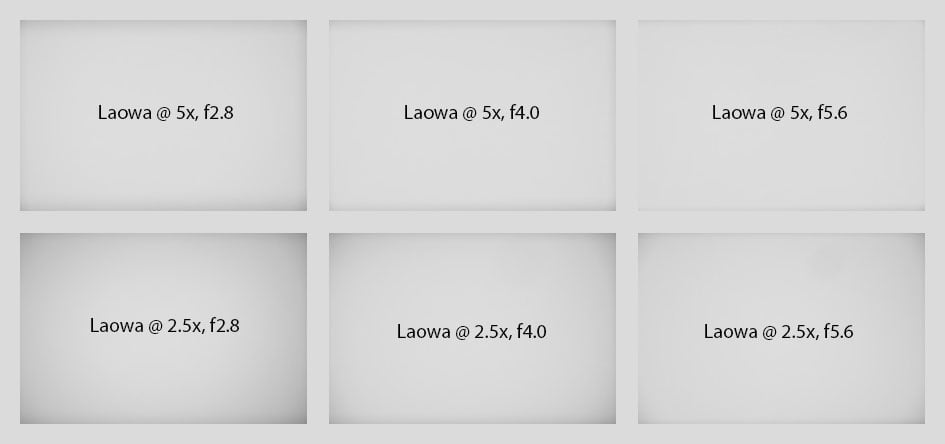
Above: Laowa 5x Ultra Macro without vignette compensation at 5x magnification (top) / 2.5x magnification (bottom)
The sample images above show that the lens has some mild vignetting in the corners at 2.5x magnification which is practically irrelevant at 5x magnification. But the lens shows a shadow of the internal frame (reducing stray light in the barrel) at any magnification and all apertures. Obviously that frame was calculated a bit too narrow.
Distortions are of a mild pin-cushion type at 2.5x magnification. They are easily corrected with a compensation of -5 in Lightroom/CRAW.
Distortions: Laowa 5x Ultra Macro, as is (top) / with distortion compensation at -5 (bottom)
At 5x magnification distortions are even less obvious and a compensation of -2 should be sufficient.
Bokeh quality
This test is for the rendering of point-light sources in an out-of-focus background. The circle of confusion that is produced by this test is pretty indicative of Bokeh performance (in the background) and light fall-off. Ideally the out-of-focus image of the point-light is evenly lit and perfectly circular, with no “onion-rings”, and without coloration. Large aperture lenses normally produce an effect known as “cat’s eye” the further away from the optical axis the point-light is projected. This is due to optical vignetting in the lens barrel when light enters the lens from an angle.
The images and crops below are shown at full frame size.
Above: Laowa 5x Ultra Macro at f2.8, 2.5x; click image for 4k version
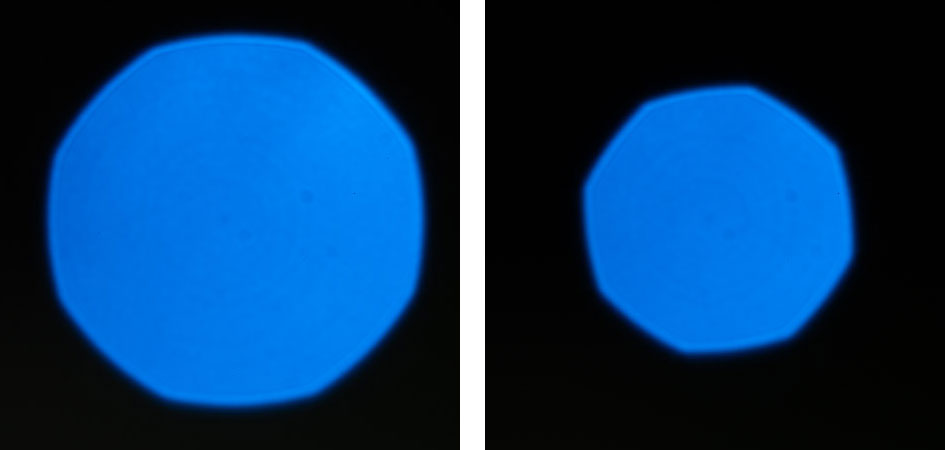
Above: Laowa 5x Ultra Macro at f4.0 (left), f5.6 (right), 2.5x
Bokeh balls are huge when shooting at these magnifications – even when the entrance pupil of the lens is small. There are no onion-rings or other distracting structures inside and there’s only a weak outline. Stopping down shows that the aperture blades are not perfectly round even at f4.0. There’s no clipping or cat’s eye effect as long as the center of the Bokeh ball is within the APS-C/DX image-circle. But farther outside there is some deformation and clipping, some of it due to the stray-light frame inside the lens. See below showing two crops from the upper right corner of the full frame with a shadow of the internal frame of over 100 pixels height at the top.

Above: Laowa 5x Ultra Macro at f2.8 (left), f4.0 (right), 2.5x
The huge circles of confusion also tend to make everything in front of or behind the focal plane look absurdly large. See the following image of a ruler which seems to be bent around the center:
Above: Laowa 5x Ultra Macro at f2.8; click image for 4k version
This is not a fault of the lens but simply a consequence of the large magnification. Looking closer at the image above also reveals residues of loCA in the middle-ground. But apart from that and the clipping issues at the borders/corners I find the Bokeh of the Laowa 5x Ultra Macro quite pleasing.
Flare, ghosting, and sun-stars
Catching a strong light-source shining directly into the lens is always a risky business: it could produce strange colorful ghost-images or reduce contrast considerably through flare and glare. The appearance of flare and ghosting depends on factors like the aperture and the angle of the light hitting the lens. So to judge the proclivity of Laowa’s 5x Ultra Macro for these artifacts I went through a series of well calculated shots against a strongly lit pin-prick in a black (but not very clean) cardboard to provoke glare and ghosting. Following are some example results. The little bright square inset in the upper left shows the respective area with an exposure compensation of +3 EV to make it easier to see which levels of black the lens renders at that point:
Above: Glare and ghosting. Strong light hitting the Laowa 5x Ultra Macro at f2.8; click image for 4k version or here for +3 EV exposure compensation
Above: Flare from strong light hitting the Laowa 5x Ultra Macro at f8; click image for 4k version or here for +3 EV exposure compensation
I didn’t see any ghosting from the Laowa 5x Ultra Macro and veiling glare from light sources near the focal plane seems well controlled. Be aware though that shooting against bright light-sources further away risks introducing veiling glare from the huge circles of confusion.
Light just outside the corner produces a visible streak across the image but is far weaker than from the Laowa 100mm f2.8 2x Macro APO (see here). And to produce visible sunstars the lens needs to be stopped down to f8.0 or below:
Above: Sunstars from the Laowa 5x Ultra Macro at f8; click image for 4k version or here for +3 EV exposure compensation
Next check out my sample images!
Check prices on the Laowa 25mm f2.8 2.5-5x Ultra Macro at Amazon, B&H, Adorama or WEX UK. Alternatively get yourself a copy of my In Camera book or treat me to a coffee! Thanks!





